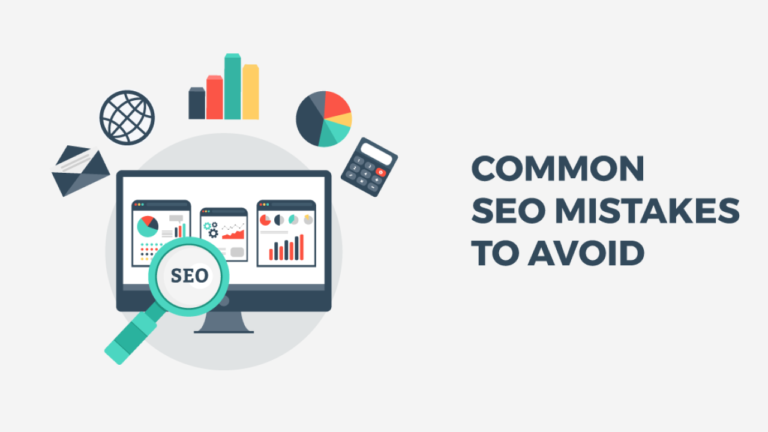
In the vast digital landscape of SEO, one term you’ll frequently encounter is “anchor text.” It’s a critical element that can significantly impact your website’s search engine ranking. While it might seem like a minor detail, it’s a powerful tool that can make or break your SEO strategy.
Anchor text refers to the clickable words used to link one web page to another. It’s the visible, clickable text in a hyperlink that users see. Search engines use this text to understand the content of the linked page. The right anchor text can boost your site’s visibility, while the wrong one can lead to penalties.
Understanding and effectively using anchor text is key to a successful SEO strategy. It’s not just about building links; it’s about creating relevant, valuable connections that enhance the user’s experience and boost your site’s credibility.
What is Anchor Text?
When discussing the term “anchor text”, it’s essential to delve into the intricacies of web design and search engine optimization (SEO). In essence, anchor text refers to the clickable hyperlinks that divert users from one webpage to another. These links often stand out due to their distinct color or underlining, distinguishing themselves from the surrounding non-hyperlinked text.
What makes these hyperlinks—known as anchor text—significant is their potential to influence search engine performance. When search engine algorithms and web crawlers analyze a webpage’s content, they don’t merely focus on visible on-page elements. These bots also consider underlying codes and features, including anchors. Through this analysis, search engines comprehend the context of hyperlinks and the linked pages’ content.
It’s paramount to note, anchor text doesn’t merely function as a pathway between web pages. Various types of anchor text exist, each serving a unique purpose. For example, exact match anchors directly match the keyword or phrase of the linked page, subsequently boosting SEO. Conversely, generic anchors, like “click here”, don’t offer keyword-related benefits but prove essential for maintaining a natural and balanced link profile.
Distinguishing between these anchor categories and effectively leveraging them can drastically impact a website’s search engine performance. Rightly used, anchor text improves visibility, bolsters credibility, and enhances user experience. However, misuse or overuse can lead to search engine penalties, tarnishing a website’s reputation and performance.
Effective use of anchor text constitutes a small yet pivotal aspect of SEO. It’s a powerful tool web designers and SEO experts must understand and wield wisely. When effectively used, it creates valuable connections between web content—reinforcing a website’s authority and credibility in the digital realm.
Importance of Anchor Text in SEO
The significance of anchor text in SEO cannot be understated. Its proper use can impact a website’s search engine performance in several ways. For starters, it aids search engines in understanding the context and content of the linked page. This understanding is crucial in determining search engine rankings. The more accurately a search engine can understand a webpage, the more likely it is to show the webpage in relevant searches. Good use of anchor text can improve search visibility.
Let’s consider the types of anchor text again. When a website uses exact match anchors correctly, it signals to the search engine the specific focus of the linked page. This precision can help in ranking for targeted keywords. However, exact match anchors must be used with caution as overuse can lead to penalties.
On the other hand, generic anchors do not include keywords but instead use generic phrases like “click here”. While they aren’t keyword-focused, generic anchors play a role in providing a balanced and natural-looking link profile. Having a healthy mix of different types of anchors can enhance a website’s credibility and overall SEO performance.
Not only does anchor text influence SEO, but it also contributes to a better user experience. Through descriptive and relevant anchor text, users can understand what to expect from a hyperlink before clicking on it. This clarity can enhance user navigation, satisfaction, and engagement, which indirectly contributes to SEO success.
Finally, varied and well-planned anchor text strategies can help in avoiding over-optimization and potential search engine penalties. Understanding these nuances and the strategic use of anchor text is a key skill for SEO professionals.
Types of Anchor Text
To fully capitalize on anchor text potential, it’s critical to understand various anchor text types and how each one contributes to SEO differently.
First, we’ve got exact match anchors. These contain the exact keywords for which a website wants to rank. For instance, if a website owner wants to rank for ‘best SEO agency,’ the exact match anchor will also be ‘best SEO agency’. This type, when used wisely, can strengthen a website’s search engine ranking. However, excessive use can trigger search engine penalties for over-optimization.
Next, there is partial match anchor text, which includes variations of the targeted keyword within the text. For example, for the keyword ‘best SEO agency,’ a partial match anchor could be ‘one of the best SEO agencies’. It’s slightly more subtle than its exact counterpart but still holds considerable SEO value.
Generic anchors come third. They’re non-descriptive phrases that do not include targeted keywords, such as ‘click here’ or ‘read more’. While seemingly inconsequential, generic anchors play a key role in creating a natural, diverse anchor text profile.
Then we have branded anchors which utilize a brand’s name within the anchor text. It’s a way of tying brand recognition to a particular webpage. For example, using ‘SEO services by BrandXYZ’ as an anchor text provides a signal to search engines linking BrandXYZ to SEO services.
Lastly, let’s not forget about naked URL anchors. They incorporate a webpage’s actual URL and can appear in one of two formats: ‘https://www.example.com’ or ‘example.com’. Even though they might not seem keyword-focused, naked URLs offer an honest, straightforward way to diversify anchor text. Despite their simplicity, they factor into a well-rounded anchor text strategy.
Remember, carefully calibrating a mix of these anchor types can reap robust SEO results, without stepping into the zone of over-optimization. The key is to understand the right anchor text to use in a given context and optimize it without overdoing it for the search engines.
Best Practices for Anchor Text Optimization
Understanding how to effectively utilize different types of anchor texts is crucial. But, there’s more to anchor text optimization than just knowing the types.
One cannot overlook relevancy. It’s one of the key elements in the SEO world. Always ensure that the anchor text is relevant to the content it’s linked to. This not only helps the readers but also helps search engines understand the context of the linked page.
In addition, balance is key. Having a fair mix of different anchor types is considered best practice. Webmasters should avoid overusing exact match anchors as this may trigger search engines to flag the site for over-optimization. A balanced mix includes exact match, partial match, generic, branded, and naked URL anchors.
It’s important as well to avoid using the same anchor text repeatedly. Repeating the same anchor text might suggest to search engines that there’s some manipulative link behavior happening, which could harm the website’s rankings.
Moreover, avoid linking to low-quality websites. The quality of the linked sites directly impacts the perceived quality of the linking page and ultimately, the entire website. If search engines consider a webpage to be low quality, it can negatively affect the ranking of the site that links to it.
Lastly, remember the importance of natural distribution. This refers to the process of linking to various high-quality, different domain websites that are relevant to the content, instead of focusing on just a few. This is a quality signal to search engines, indicating the content’s legitimacy and usefulness.
Indeed, optimizing anchor text is not just about understanding its types, but also about implementing strategic planning and being aware of potential pitfalls. It may take some time to get the hang of it, but the increase in organic traffic will be well worth the effort.
Mistakes to Avoid in Anchor Text Usage
In practice, mistakes often amount to missed opportunities. This notion undoubtedly applies to anchor text usage. Here are a few pitfalls to sidestep for optimum efficacy.
Top on the list is Over-Optimization of Anchor Text. Yes, it’s vital to include relevant keywords in the anchor text. But it’s equally important not to overdo it. Google’s algorithms can spot an over-optimized anchor text, leading to possible penalties. To ensure a natural distribution of anchor text, strike a fine balance.
Then there’s the issue of Irrelevant Links. Relevancy must be upheld in all anchor text links. Linking to unrelated, low-quality websites could negatively reflect on a site. Always link to high-quality, relevant websites.
A third common mistake is Lack of Variety in Anchor Text. SEOs should avoid repetitive anchor text, no matter how relevant the keywords might be. Repetition leads to monotony and may arouse suspicion from search engine crawlers. Hence, it’s advisable to mix up anchor text for diversity.
Next up is the Incorrect Use of Generic Terms. Anchor texts such as “Click Here” or “Read More” don’t provide any SEO value. In fact, they are a wasted opportunity to improve site SEO. It’s smarter to strategically plan keywords that will add value to the article and promote organic traffic.
Lastly, Avoiding Links to Deep Pages is a mistake some professionals make. While popular pages might seem like attractive targets, they’re not the only pages that need linking. Other pages deeper in the website architecture also need visibility and linking them contributes greatly to a balanced link profile.
Indeed, it’s noteworthy that prioritizing quantity over quality of links is a blunder of its own class. SEOs shouldn’t overlook the power of strategically planned, high-quality links.
These are a few of the common missteps in anchor text usage. Recognizing these pitfalls can be an effective stepping-stone towards a better anchor text optimization strategy. It’s important to keep refining and learning.
It’s clear that anchor text optimization plays a pivotal role in SEO strategy. Avoiding over-optimization, maintaining relevance, steering clear of repetition, and linking to deep pages are crucial steps towards better optimization. By understanding these common pitfalls, one can craft a more effective approach to anchor text use. It’s not just about using keywords strategically, but also about creating a seamless user experience. So as you move forward, remember that the power of anchor text lies in its relevance and strategic placement. Use this knowledge to your advantage and watch your SEO efforts thrive.







